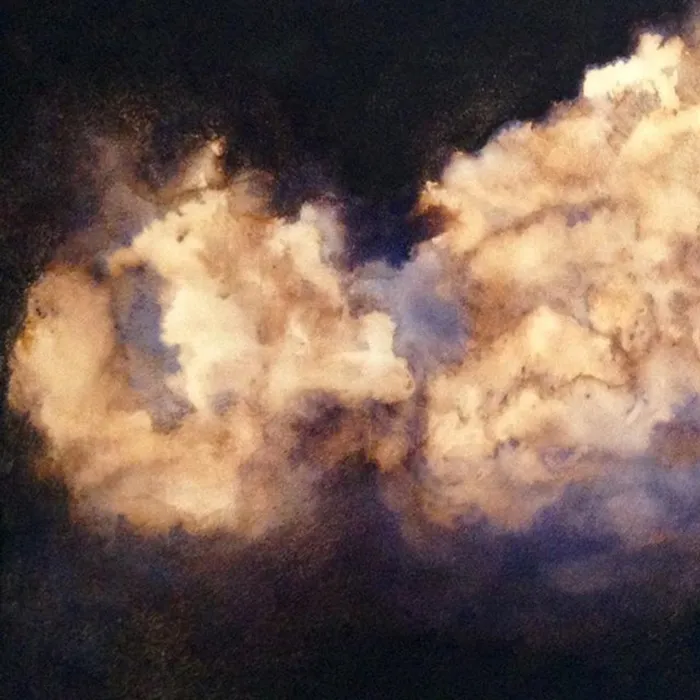It's all Penn-ed in the clouds

TRIBUTE: In Goya’s Cloud, Robyn Penn pays tribute to the masters of painting whose renderings she admires and mimics. TRIBUTE: In Goya’s Cloud, Robyn Penn pays tribute to the masters of painting whose renderings she admires and mimics.
Stepping into Robyn Penn’s exhibition is a celestial experience as you find yourself surrounded by depictions of clouds.
Everywhere you look around the Barnard Gallery are floaty white suspended entities. She comes at this subject through a variety of mediums and processes. It's the oil paintings that invite your gaze. Large canvases are dedicated to this ambiguous natural phenomenon.
Superficially, she appears to conform to painterly representations of clouds. It helps that she is a superb painter, able to capture the soft contours and infuse the paintings with all the subtle tones used to describe and highlight this white, ephemeral matter.
Indeed, in paintings such as Goya’s Cloud, she pays tribute to the masters of painting whose renderings she admires and mimics.
Clouds have been a recurring motif in art. There is a long tradition of painters who have represented them in their art. However, they have functioned as understated or peripheral elements to evoke the heavens and describe the unseen world of gods, angels or the dead living parallel to the living, observing them from a great height, judging them even.
Penn subtly disrupts this tradition in her exhibition, Paradise Lost, though through her art she too aims to weigh humankind's activities. She is not so much interested in paying homage to the art canon than concerned with touching on nostalgia – alluded to in the title.
What is this "paradise" at the centre of this elegiac exhibition? It is not the erosion of the tradition of painting she mourns – as she demonstrates that can be revived with a brush stroke. The absence of a guiding morality or maybe an afterworld typically connected to the celestial worlds could be the underlying topic.
That is if it weren't for the figurative works in the smaller room of the Barnard where images of climate change denialists, Our Beloved Leader (Milton Friedman), Merchant of Doubt (Fred Singer), Merchant of Doubt (Robert Jastrow) are juxtaposed with a series wryly titled The Protectors, depicting activists being arrested.
In this way it is not so much the exploitation of the natural world she aims to draw to our attention, but how we choose not to see its impact. As the titles Poles of Ignorance and Cloud of Unknowing imply, our appreciation of the natural world and its beauty somehow overshadows or obscures a darker reality in which we are all complicit.
She mirrors this condition via her art. Her adept and poetic rendering of clouds is so seductive it is easy to drift along and get swept up in what appears to be art centred on an entity we now associate with relaxation and letting go of earthly preoccupations. However, the repetition and/or her fixation with the clouds begins to irk – it feels almost pathological, twisted even.
In this way she replicates humanity's fixation and appreciation of the natural world, which somehow often blinds us to our impact on it and compels us to destroy it. This, ironically, is often driven by our longing for simpler times. Clouds not only represent nature but reveal our hidden desires – their ambiguous and shifting forms tease our imaginations and compel us to identify shapes, objects.
This is true for Penn’s exhibition of clouds – we can see into them what we want in a way – even if she directs our attention towards climate change through other more figurative works that fix the subject-matter. As a result the clouds are like a mirror for society – we can project conditions onto them, though perhaps only the ones we want to face up to.
Penn doesn't rely on us to do this, so she works at "corrupting" the pretty images of the clouds. She does this through her more abstract, deconstructed renderings of them. In the Cloud of Unknowing series and Tarred and Feathered II, she appears to peer into these intangible entities, exposing all the natural elements that are combined to create clouds. Lines and marks of different qualities moving in different directions suggest all the forces at work. As such a delicate though robust system appears to be at work. In ink paintings such as Tarred and Feathered III, this has been disrupted – as indicated by drips of ink running down the paper.
The hardest blow that Penn delivers is through the work titled The Sleep of Reason that produces monsters, where she evokes a manmade cloud that recalls the recognisable mushroom shape produced after an atom bomb has been detonated, exploded. This artwork is hidden inside the smaller room of the gallery and when you encounter it, your appreciation of the cloud forms surrounding you is tinged by a sense of horror.
Clouds in a way have escaped this; they cannot be altered. However, Penn reminds us of all the unseen forces that produce it and their place within a natural system that is being eroded. Choose to see it or not.
– Paradise Lost shows at Barnard Gallery until February 28